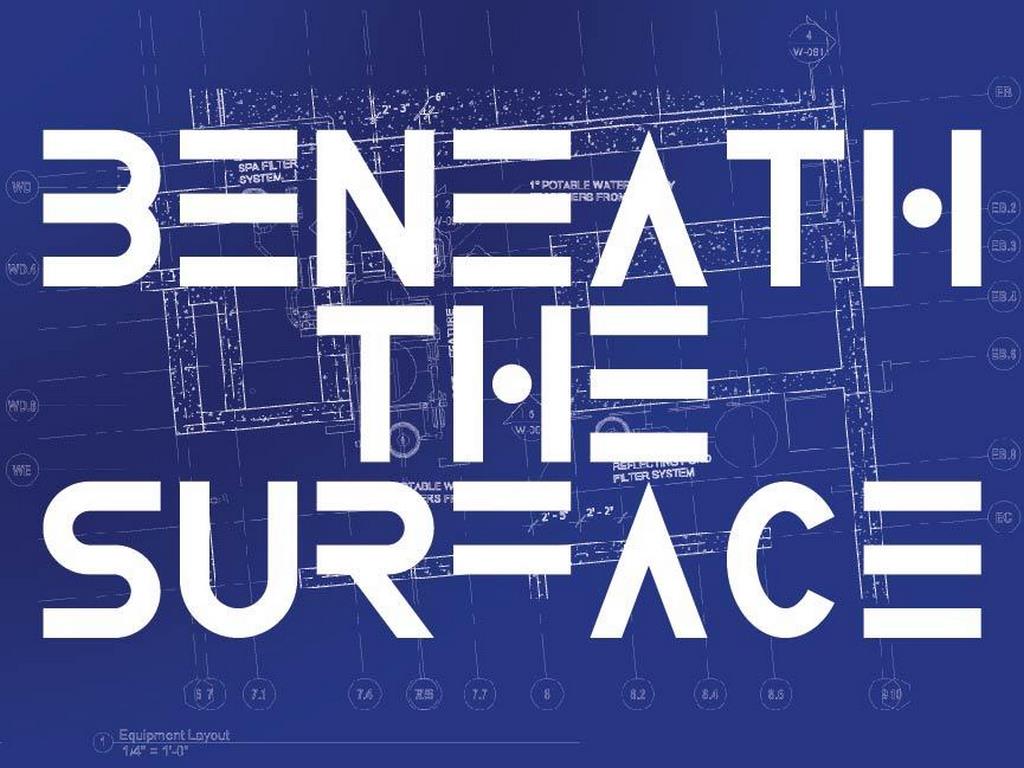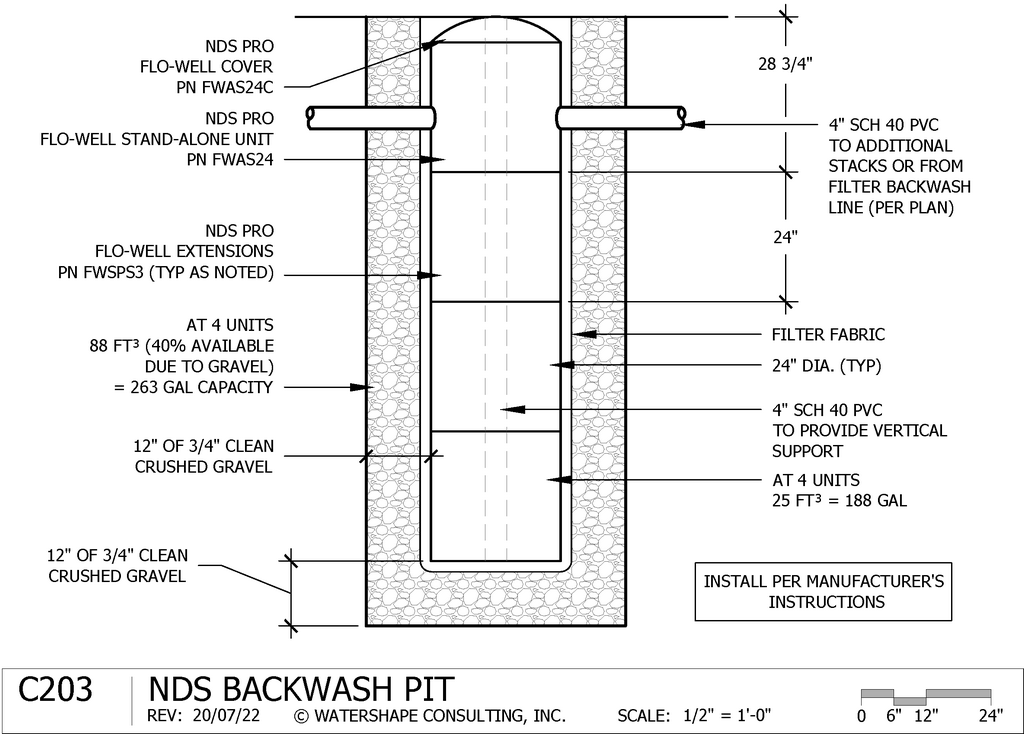Detail: C203

 Managing waste water in the form of run-off and especially filter-backwash effluent can be surprisingly problematic, observes Dave Peterson, especially when the issue is left to an afterthought. In this detail, he offers an elegant waste-water solution in the form of a simple backwash pit.
Managing waste water in the form of run-off and especially filter-backwash effluent can be surprisingly problematic, observes Dave Peterson, especially when the issue is left to an afterthought. In this detail, he offers an elegant waste-water solution in the form of a simple backwash pit.
Water conservation efforts have historically focused on upstream demands such as low flow toilets and showers. Downstream use (‘reuse’ is perhaps more appropriate) is becoming more important in many places, prompting cities to adopt building codes and even taxes on how stormwater is handled on-site.
For example, if you try discharging a home’s rain-gutter run-off to the storm drain in California, you will likely be fined for not directing that water to a basin that can recharge the groundwater supply first. That requirement has resulted in a number of solutions including ‘grassy-swales’, precast concrete dry-wells and polyethylene tanks that are not unlike traditional septic tank and leach field systems.
Watershapers can be particularly challenged with filter backwashes and even entire pool-draining-operations needing to be handled 100% on-site.
 Detail C203 uses an NDS Flo-Well system to dissipate the automated backwash from a sand filter. Typically filter backwash water contaminates are very small and can be absorbed into the soil so this pit does not necessarily fill with debris.
Detail C203 uses an NDS Flo-Well system to dissipate the automated backwash from a sand filter. Typically filter backwash water contaminates are very small and can be absorbed into the soil so this pit does not necessarily fill with debris.
Key points:
• Connect multiple units together if more volume is needed
• This detail could also be used for storm runoff
• I recommend vacuuming the dry pit once per year
• All wells and pits require particular attention to safety and a few well-placed bars secured across the top will prevent anyone from falling in.
David J. Peterson, P.E, IWI, is co-founder of Watershape University and president of Watershape Consulting, Inc. For additional assistance with this detail he can be reached at [email protected]









